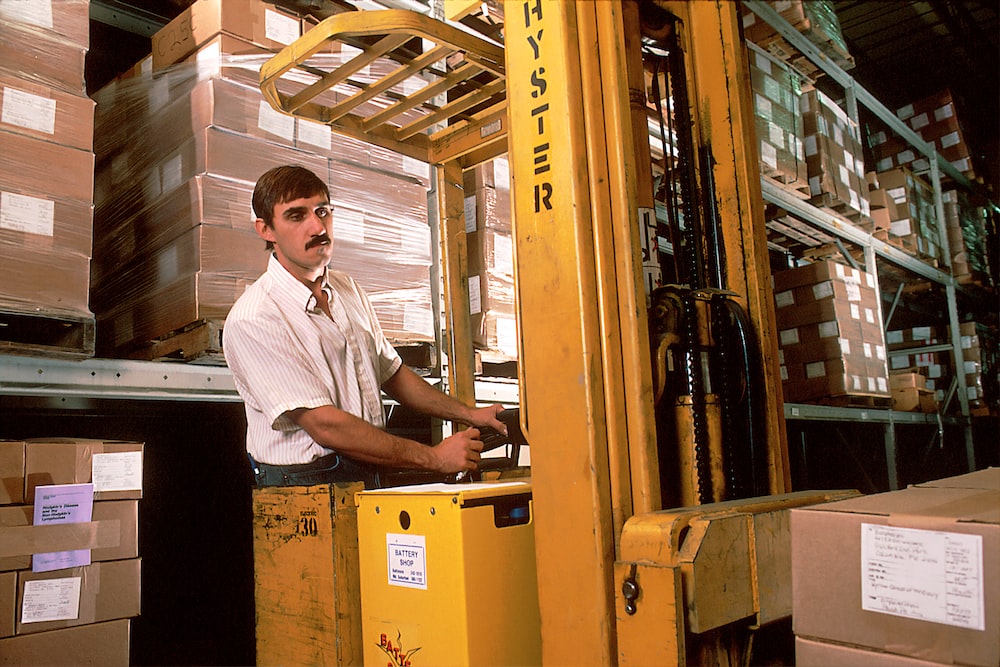In the event of a forklift accident in the workplace, who is liable?
Counts:227 Time: 22-11-27 From: Suzhou Teknect Engineering Co., Ltd.
In the warehousing and logistics industry, most accidents treat pedestrians as victims, ignoring forklift operators, and forklift drivers also need further protection.
Case in point:
In the square of a paper mill in a foreign area, the tragedy of a worker being crushed to death by a forklift has made news.
The accident was caused by a large forklift truck that was operated by the victim's colleague at the time. During a maneuver, the driver knocked over and ran over a colleague who was crushed to death by the immense weight of the forklift.
In the event of a forklift accident in the workplace, who is liable?
Depending on the main cause of the accident, the party responsible for the forklift accident is also different.

Next, we will discuss who should be responsible for forklift accidents from the five perspectives of forklift operators, forklift salespeople, forklift manufacturers, forklift maintenance companies, and employers.
Forklift operator When a forklift accident occurs, he is mainly responsible if the forklift operator
is negligent in driving, illegal operation, etc. Therefore, drivers must have a regularly renewed driver's license, be properly trained in forklift safety, and know the rules of the work area. Failure to comply with safety protocols or improper use of forklift trucks is the main cause of forklift accidents by forklift operators.
Forklift salesperson
If the forklift operator is found not guilty, there is no violation of the operation. Well, the company that sells or leases the vehicle will be involved as a third party that is given responsibility.
Whenever an abnormal vehicle is sold, the salesperson and the company he/she represents are responsible for the damage. Delivering a tampered or damaged forklift or a forklift that lacks adequate maintenance are two common responsibilities for dealers.
Forklift manufacturers are subject to serious consequences and penalties as long as the casualties of accidents are caused by forklift manufacturers
.
In the forklift manufacturing industry, two common examples of design flaws or problems found during the manufacturing process, the industry that manufactured the vehicle could be held legally liable in the event of an injury to the victim.
Forklift Repair Company
If the maintenance of the forklift is entrusted to an external company and an accident still occurs, the first thing to check is likely to be whether the proper maintenance of the vehicle and any repairs are carried out regularly and effectively.
Employer
The responsibility falls to the employer when the security process is not supervised or properly carried out due to the company's boss. In addition, failure to properly conduct forklift safety training, failure to enforce safety regulations, and failure to ensure a safe environment in the forklift work area are three common situations, and employers are technically responsible for forklift accidents.
In many countries, whenever a worker receives injury compensation benefits, he or she cannot make further claims against their employer, a form of insurance that protects the owners of the company. Employers have an ethical and primary responsibility to reduce or even eliminate the risk of forklift accidents.
Safety measures to prevent or reduce forklift accidents:
-
Correct risk assessment is carried out during the handling and loading phases of the vehicle, taking into account possible operator errors.
-
Develop working procedures for loading and unloading operations in the designated area, which must be clearly communicated and understood to the operator (the procedure must include an inspection of the vehicle and the area before the start of the movement)
-
Forklifts should only be used by trained and qualified operators
-
Inform and instruct workers about risks and correct working methods
-
Check that the forklift is installed correctly and that proper driver safety systems such as seat belts, side barriers, closed cabins, etc. are effective and new
-
Before loading and unloading, make sure that the transport is locked, that the 1st gear is engaged, that the parking brake is activated and that the wheels are stopped with appropriate wedges
-
Ensure coordination between the subjects carrying out loading and unloading operations
-
Installation of collision avoidance systems: There are different types of forklift collision avoidance systems: some include visual and/or audible alarms that signal the presence of pedestrians and obstacles to the operator, allowing them to intervene in time to avoid accidents.

 ENGLISH
ENGLISH  简体中文
简体中文
